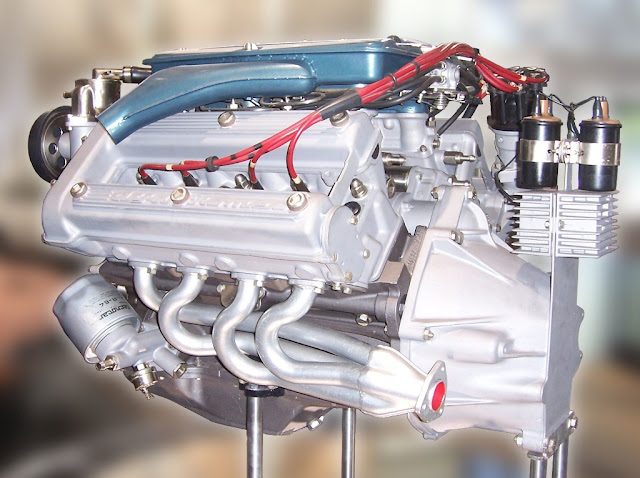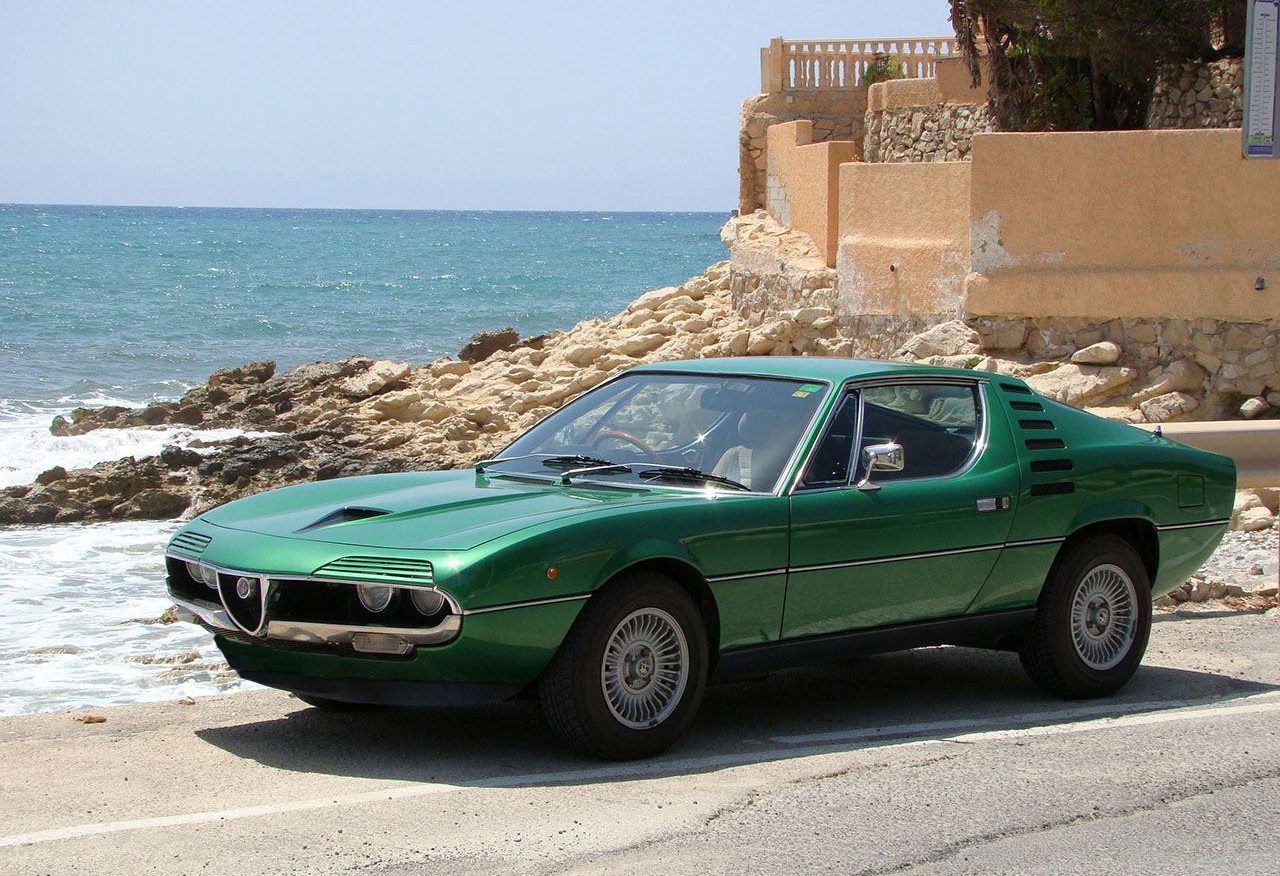I love it when I can combine the joy of friendship, with a joyful automotive experience. This story starts in 1975 when I needed to hire staff for MODERN MOTOR magazine, because I was finding it tough being the only salaried employee (as Editor), relying on the efforts of friends and freelancers to help put the magazine together each month.
I was introduced to a young guy called Matt Whelan, full of enthusiasm for cars, but having built up his journalism experience writing about motorbikes for our sister publication REVS MOTORCYCLE NEWS.
He settled into our routine quickly, and not only brought impressive writing skills, but some great editorial ideas, and freshened our approach to writing about cars. He was also a genuinely nice guy, and over the next two and a half years we became very good mates.
In May 1975, my good friends at Alfa Romeo called to offer us a short test drive in their new Montreal GT coupe, which was eagerly accepted.
However, we need to divert down a sidetrack at this point, to chart the interesting and colourful history of the whole program.
The Montreal began as a concept car (below) produced in 1967 by Gruppo Bertone and its chief designer, Marcello Gandini, especially for display as an exhibit at EXPO 67 in Montreal.
The car appeared without any model designation, but the public christened it ‘Montreal’ in honour of the Expo. The concept car was based on the running gear of the Giulia Sprint GT, powered by the 1.6L engine from the Giulia Ti. However, what the automotive world did not know at the time was that the ‘suits’ at Alfa Romeo had big plans.
Concurrent with the creation of the Montreal concept was the Tipo 33 racing program, which began in the mid 60s, when Alfa Romeo’s racing division, Autodelta, created a sports racing car with a tubular chassis, and despite being originally planned to use a four-cylinder engine, Carlo Chiti designed a brand new 90° 2.0L V8.
When the production version of the Montreal was initiated (Tipo 105.64), it was agreed it would use a detuned version of the Tipo 33 V8.
However, Chiti had by then developed a dry-sump lubricated, cross-plane crankshaft 2.6L version, producing 147kW (197bhp).
 |
| 1970 Geneva Salon production Job One |
The design was unusual for Alfa Romeo in that it was very ‘oversquare’ with an 80mm bore and 64.5mm stroke. This resulted in a very 'flat' torque curve, making for very flexible performance when linked to the close-ratio five-speed manual.
One of the interesting aspects of Montreal production was the overly complicated manufacturing process. In a way, it was typically Italian – somewhat confusing and fraught with challenges to ensuring acceptable quality.
First of all every Montreal began at Arese where the chassis was produced. This was then sent to Bertone’s facility at Caselle, where the body was fitted. The package was then sent to Bertone’s assembly operation at Grugliasco where the complete chassis/body was degreased, and manually spray painted, and the interior fit-out completed. Then the car was sent back to Arese where the engine/transmission/suspension was fitted.
Enthusiasts restoring, or rebuilding vintage Montreals have discovered that between them, both Alfa Romeo and Bertone had very poor record-keeping, so it’s almost impossible to align each of the components by serial number, thereby creating cars with genuine provenance.
In total Alfa Romeo built 3900+ Montreals between 1970 and 1977. It was never ‘Federalised’ which meant the car could not be sold in the USA, but even now Montreals are in high demand.
In late 1972 Autodelta produced a racing version complying with Group 4 regulations. The first car was sent to the German team run by Dieter Gleich (also the primary driver) to compete in the DRM series for GT cars.
Despite a boost in output to 276kW (370bhp), the car was not competitive, but at least carried the Alfa Romeo flag in European motor sport.
However, the donor car (Tipo 33) was doing very well in the sports racing category, driven by a fabulous line-up of international drivers, including my good friend Derek Bell – who shared a car with Jackie Ickx.
In 1973 Carlo Chiti produced a fabulous flat-12 3.0L engine producing 500hp. In 1975, the Tipo 33TT.12 enjoyed its best racing season delivering seven wins in eight races, and dominating the 1975 World Championship of Makes.In 1977 a new car debuted (Tipo 33SC 12) with a box chassis, and was Alfa Romeo’s most successful version, winning every race in the 1977 World Championship for Sports Cars.
In the final event at the Salzburgring, Arturo Merzario drove a twin-turbo flat 12, finishing second on its first outing. This engine was later used in Formula One in Brabham’s BT45 and BT46, then later in Alfa Romeo’s own Tipo 177 F1 car.But, let’s pickup on our Australian test drive of the Montreal. We only had the car for five days, so we suspended all office work to take turns at the wheel. Although Matt and I shared the test drive, the story appeared under his by-line, and his words reveal he was very impressed with the Montreal, as was I.
 |
MODERN MOTOR, June 1975 issue
This is despite a very scary moment for one of our testers on a wet and greasy night, when the Montreal slid off a rain-soaked freeway to spin out-of-control into the grassy (and very slippery) median. He couldn't wait to regale Matt and I with the drama-filled excursion!
|
To be truthful, the Montreal may have been a joy in the dry, but a real monster in the wet, thanks to the very hard compound Pirelli tyres.
The double wishbone front suspension, and the live rear axle were an amazingly well-sorted combination.
The roadholding was peerless, the turn-in exceptionally sharp – but the lack of power steering made driving it more suited to Charles Atlas, than Matt or me.
The ride was also beautifully compliant, but all this focus on elements of the underbody, takes away from describing the glorious V8. It was a jewel of an engine, and with a redline at 7000rpm, the best way to slice up through the ZF five-speed was to not change gear before you saw 6000, and at that point the engine is howling – putting a huge smile on your dial.
I only ever enjoyed that one outing in the Montreal, but if you could buy just one GT car from the 60s, you could not find a better candidate for unique flavour in both mechanical and styling terms, but also for sheer driving pleasure.
On the subject of styling, Gandini included quite a few surprising features. Not least of which was the NACA duct in the centre of the hood. It is non-functioning, and was included to ‘hide’ the hump in the hood under which resides the ‘extremely-difficult-to-tune’ SPICA fuel injection. The strakes on the B-pillar provide an exhaust for cabin airflow, but apart from that they have no specific function.
The ’eyelashes’ were a Gandini trademark, borrowed from his masterpiece, the Lamborghini Miura.
I believe the Montreal is a totally underrated car. I think it is a gem, and I am so thrilled (as a former member of the ‘Alfisti’) that Alfa Romeo had the guts to produce it.
It was all irrational, pie-in-the-sky stuff because Alfa Romeo sold so few, but it was brilliant, different, fun, true to the spirit of the GT car and, as Jay Leno said, “one of the great products not only from Italy, but also from Alfa Romeo. It showed their true colours probably more than any other car from Arese.”
Couldn’t have put it better myself.
JOHN CRAWFORD
POSTSCRIPT:
Sadly, my dear friend Matt Whelan passed away in August 2013, and the business world was robbed of a highly talented man who had translated journalistic excellence into a very promising career as an expert in computer education and the early identification of cybercrime threats.































